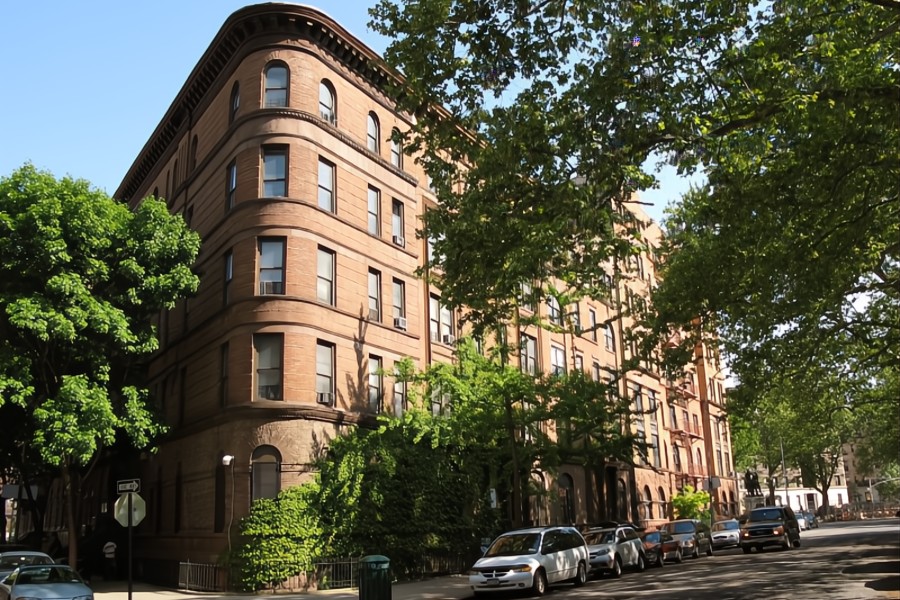
NYC Mayor Eric Adams and DEP Commissioner Rohit Aggarwala launched the final phase of the $2 billion Delaware Aqueduct Repair Project, the city’s largest infrastructure initiative.
The project — planned and prepared for over more than two decades — will prevent 35 million gallons of drinking water from leaking into the ground in upstate New York every day. The project will ensure that the Delaware Aqueduct — the world’s longest tunnel of any kind — continues to bring New Yorkers the best drinking water in the world for generations to come.
“… this final phase …”
Over the past 11 years, the city has been constructing a 2.5-mile bypass tunnel around a large leak near Newburgh and preparing to fix another leak in Ulster County; in this final phase, the city will connect the ends of that tunnel to the main aqueduct, seal off the leaking portion near Newburgh, and repair the leak under Ulster County.
“New York City’s tap water is the envy of the world — it’s why we have the best pizza and bagels in the country,” said Mayor Adams. “Today, we’re kicking off the final phase of a 11-year project to secure the future of our water supply and make sure that New Yorkers can continue to enjoy the billion gallons of drinking water we use every day. In order to fix the 35-million gallon per day leaks in the Delaware Aqueduct, we’ve built a 2.5-mile bypass tunnel, and over the course of the next several months, we’re going to connect that bypass tunnel to the main aqueduct as part of the largest repair project in DEP’s history. Some New Yorkers’ water might taste or smell slightly different for a few months while we complete this project as their water comes from a different reservoir, but New Yorkers should know it will still be perfectly safe to drink.”
“The world’s best water is the result of incredibly complex infrastructure — including the world’s longest tunnel. That takes real work to maintain,” said Deputy Mayor for Operations Meera Joshi. “This heroic project, which took over 20 years to prepare for, shows the incredible ingenuity of New York’s civic employees who give their all every day to keep this city running.”
“Nearly 10 million New Yorkers count on us to provide them with high-quality water every single day of the year, without fail. We will continue to do that during this complex repair and will ensure we meet that essential mission for generations to come,” said DEP Commissioner Aggarwala. “Just like different brands of bottled water taste a bit different, so do our different reservoirs. While some residents may notice a temporary, subtle difference in taste or aroma during the repairs as we change our famous blend, our water remains clean and safe to drink.”

DEP manages New York City’s water supply, providing approximately 1.1 billion gallons of high-quality drinking water each day to nearly 10 million residents, including 8.3 million in New York City. The water is delivered from a watershed that extends more than 125 miles from the city, comprising 19 reservoirs and three controlled lakes. Approximately 7,000 miles of water mains, tunnels, and aqueducts bring water to homes and businesses throughout the five boroughs.
Throughout the repairs, DEP will rely upon the redundancy of its robust 19-reservoir system to continue to deliver clean, safe water at the levels its customers currently depend upon. Specifically, there will be increased amounts of drinking water coming from the Croton Watershed, a group of 12 reservoirs and three controlled lakes in Westchester and Putnam Counties, to feed New York City’s water supply. Thanks to DEP’s many redundant sources of water, and its interconnected set of aqueducts and water tunnels, there will be no impact on the amount of water being supplied to the city. As DEP does every day, the agency’s scientists and technicians will continuously monitor the water supply.
DEP also completed significant capital projects to prepare for this phase, including increasing the Catskill Aqueduct’s capacity, upgrading reservoirs across the watershed, and more.
Decades of extensive planning, robust system capacity and redundancies, and careful management and oversight of the project will ensure that New York City residents, and others who also rely upon the same water, continue to enjoy the world’s highest quality and best-tasting water.
“… help maintain the city’s legendarily clean, crisp-tasting drinking water.”
New York’s different watersheds have different taste characteristics. As the Croton Watershed reservoirs are used more than usual for New York City while the aqueduct repairs are underway, some customers may notice subtle differences in the taste or aroma of their tap water, particularly those with refined or sensitive palates and senses of smell. The Croton Filtration Plant has been modified to use granular activated carbon, similar to what is used in household pitcher filters, during the project’s duration to help maintain the city’s legendarily clean, crisp-tasting drinking water.
The Delaware Aqueduct
The 85-mile-long Delaware Aqueduct is an engineering marvel, delivering about 600 million gallons of water a day using only gravity, from four Catskill Mountain region reservoirs. The water is held in the Rondout Reservoir in Ulster County, then heads to West Branch Reservoir in Putnam County, the Kensico Reservoir in Westchester County, and, ultimately, ends up in the Hillview Reservoir in Yonkers, before entering the city’s distribution system. The Delaware Aqueduct was put into service in 1944 when New York City Mayor Fiorello H. La Guardia opened a set of emergency gates to channel the Rondout Creek directly into the new aqueduct. It is the longest tunnel of any kind in the world.
In 2010, New York City announced a $2 billion plan to repair the aqueduct by connecting a 2.5-mile-long bypass tunnel around a known leak discovered in the 1990s near Newburgh and to repair another leaking section of the aqueduct from the inside deep under the Ulster County town of Wawarsing. The new bypass, being connected 600 feet beneath the Hudson River is the first tunnel built under the Hudson River since 1957, when the south tube of the Lincoln Tunnel was completed. DEP engineers consider the bypass to be the most robust tunnel in the history of the trade.
Since 1992, DEP has continuously tested and monitored the leaks, which can release upwards of 35 million gallons per day. Nearly all the water escaping the leaks happens near the Hudson River in Newburgh. DEP has been working closely with Hudson Valley municipalities that rely on the Delaware Aqueduct for their water supplies, and with the U.S. Geological Survey to continually monitor groundwater levels in communities where the Delaware Aqueduct leaks are located.

“Just as water is essential to life, the Delaware Aqueduct is essential to the life of our City, carrying about half of our water supply,” said New York State Assemblymember Jenifer Rajkumar. “The aqueduct’s historic new $2 billion, 2.5 mile bypass tunnel will allow us to save 35 million gallons of water each day by rerouting it from a leaking portion. That is the equivalent of the entire water usage of West Palm Beach no longer going into the ground. I am proud of my work in Albany investing in our water infrastructure, and together we will ensure every New Yorker can enjoy our world class water.”
“The momentous work that has gone into this project will ensure the continuing supply of high-quality water to New Yorkers for decades,” said Former DEP Commissioner Vincent Sapienza (2017-2022). “Our water supply system is an engineering feat that made the city what is it today, and many thanks are due to Commissioner Aggarwala and the DEP team for progressing this mega public project to its final phase.”
“This bypass is a triumph of modern engineering and will ensure that New Yorkers continue to have access to the best drinking water in the world for generations to come,” said Former DEP Commissioner Caswell Holloway (2009-2011). “The long-term planning and painstaking execution of this project are a testament to DEP’s approach to projects like this that touch the city’s most sensitive infrastructure. Congratulations to everyone at DEP for reaching this critical milestone!”
“… serve the city well for decades to come.”
“Finding a way to repair the leaks in the Delaware Aqueduct without disrupting New York City’s daily drinking water supply posed a tremendous challenge for DEP,” said Former DEP Commissioner Emily Lloyd (2005-08, 2014-16). “Although their work managing the city’s vast system of reservoirs and aqueducts is largely invisible on a daily basis, the completion of the Delaware bypass tunnel is a feat of engineering, planning, and construction that will serve the city well for decades to come.”
“Trying to deal with the most complex fix in DEP’s history — a tunnel leaking high pressure water buried in bedrock 600 feet below sea level — we knew any option we looked at was a moonshot at the time,” said Former DEP Commissioner Christopher Ward (2002-05). “This entire project has truly been a testament to the extraordinary caliber of talent working for the betterment of the greatest city in the world.”
Photo credit: 1) The Delaware Aqueduct Repair Project Available. 2) The Delaware Aqueduct Bypass Tunnel. Credit: DEP. 3) Map of New York City’s water supply. Credit: DEP.
Become a Harlem Insider!
By submitting this form, you are consenting to receive marketing emails from: . You can revoke your consent to receive emails at any time by using the SafeUnsubscribe® link, found at the bottom of every email. Emails are serviced by Constant Contact








